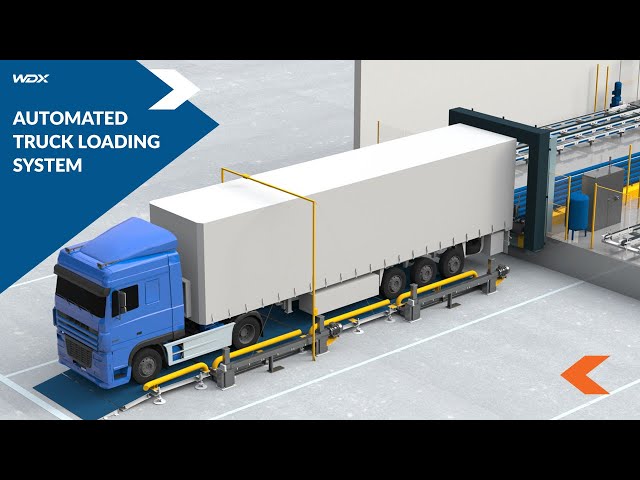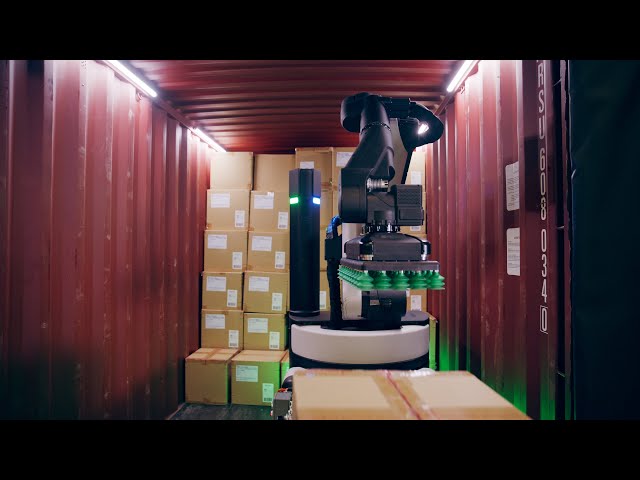AGV, ASRS, Warehouse Distribution Automation.
AGV, or automated guided vehicle, is a type of industrial robot that is used to move materials within a warehouse or manufacturing facility. AGVs are typically equipped with sensors and guidance systems that allow them to navigate around a facility and follow predetermined routes. They can be used to transport materials such as raw materials, finished goods, and work-in-process from one location to another within a facility.
ASRS, or automated storage and retrieval system, is a type of material handling equipment that is used to store and retrieve materials within a warehouse or distribution center. ASRS systems typically consist of a series of racks or shelves and a fleet of automated vehicles, such as AGVs, that are used to move materials within the system. ASRS systems can be used to store and retrieve a wide range of materials, including pallets, containers, and individual items.
Warehouse distribution automation refers to the use of automated systems and technologies to improve the efficiency and effectiveness of warehouse and distribution operations. This can include the use of AGVs, ASRS systems, and other types of automated material handling equipment, as well as technologies such as warehouse management systems and robotics. The goal of warehouse distribution automation is to improve the speed and accuracy of warehouse operations, reduce costs, and increase customer satisfaction.
History of ASRS
Automated storage and retrieval systems (ASRS) have a long and rich history. The first ASRS system was developed in the early 1960s by Dematic, a German engineering company. The system was installed in a warehouse for the Bertelsmann book club in Gütersloh, Germany.
The early ASRS systems were relatively simple, consisting of a mobile crane that moved up and down aisles of storage racks to retrieve and store items. However, as technology improved, ASRS systems became more sophisticated and capable.
In the 1970s and 1980s, ASRS systems began to use computers to control their operations. This allowed for more precise and efficient movement of items. ASRS systems also began to use a variety of new technologies, such as barcodes, lasers, and sensors, to improve their accuracy and reliability.
Today, ASRS systems are used in a wide variety of industries, including warehousing, manufacturing, and distribution. They are used to store and retrieve a wide variety of items, including pallets, boxes, and individual items.
ASRS systems offer a number of advantages over traditional warehousing methods, including:
- Increased storage density: ASRS systems can store items much more densely than traditional warehousing methods, such as pallet racking. This allows for more efficient use of space.
- Improved accuracy: ASRS systems are very accurate in retrieving and storing items. This helps to reduce errors and improve efficiency.
- Increased productivity: ASRS systems can significantly increase the productivity of a warehouse. This is because they can retrieve and store items much faster than human workers.
- Improved safety: ASRS systems can help to improve safety in the workplace by reducing the need for human workers to lift and move heavy items.
ASRS systems are a critical part of the modern supply chain. They help businesses to store and retrieve items more efficiently and accurately, which can lead to significant cost savings and improved customer service.
Here are some of the key milestones in the history of ASRS warehouse systems:
- 1962: The first ASRS system is installed in a warehouse for the Bertelsmann book club in Gütersloh, Germany.
- 1970s: ASRS systems begin to use computers to control their operations.
- 1980s: ASRS systems begin to use a variety of new technologies, such as barcodes, lasers, and sensors, to improve their accuracy and reliability.
- 1990s: ASRS systems become more sophisticated and capable, and they are used in a wider variety of industries.
- 2000s: ASRS systems continue to evolve, and they become more affordable and accessible to businesses of all sizes.
- 2010s and beyond: ASRS systems are now widely used in the modern supply chain, and they are a critical part of many businesses’ operations.
ASRS technology is constantly evolving, and new developments are being made all the time. For example, some companies are developing ASRS systems that can be used to store and retrieve smaller items, such as individual products or components. Other companies are developing ASRS systems that can be used to store and retrieve items in cold storage environments.
Warehouse and Supply Chain Quotes
- “The smartest people are constantly revising their understanding, reconsidering a problem they thought they’d already solved. They’re open to new points of view, new information, new ideas, contradictions, and challenges to their own way of thinking.” ~Jeff Bezos, CEO Amazon.
- “Supply Chain automation using emerging technologies such as IoT and artificial intelligence will drive efficiency like we have never seen before.” ~Dave Waters
- “Almost all quality improvement comes via simplification of design, manufacturing, layout, processes, and procedure.” ~Tom Peters
- “The first rule of any technology used in a business is that automation applied to an efficient operation will magnify the efficiency. The second is that automation applied to an inefficient operation will magnify the inefficiency.” ~Bill Gates, co-founder Microsoft.
- “Information is power, and the gain you get from empowering your associates more than offsets the risk of informing your competitor.” ~Sam Walton, founder of Walmart.
- “Products can be easily copied. But a supply chain can provide a true competitive advantage.” ~Yossi Sheffi
- “One of the only ways to get out of a tight box is to invent your way out.” ~Jeff Bezos
- “Supply chain is in the crawling stage of using artificial intelligence. In the next 5 years AI will revolutionize supply chain in ways most people haven’t even though of yet.” ~Dave Waters
- “The reason why it is so difficult for existing firms to capitalize on disruptive innovations is that their processes and their business model that make them good at the existing business actually make them bad at competing for the disruption.” ~ Clayton Christensen
Warehouse Distribution Automation Training
- Alibaba Automated Warehouse is run almost entirely by Robots.
- Alibaba’s Secret ‘Smart Factory’ Could Revolutionize Manufacturing.
- Amazon’s Kiva Robots Vs Alibaba’s Quicktron Robots.
- Amazon’s Robotic Empire: Jeff Bezos’ Smart Warehouses.
- Army of logistics robots sort out 200,000 packages a day.
- Automating the Grocery Warehouse.
- Collection of Retail Supply Chain Learning Resources.
- Inside A Warehouse Where Thousands Of Robots Pack Groceries.
- Is your warehouse ready to handle omnichannel logistics?
- Shipping Warehouse Automation Robots.
- The Robots Making Your Online Orders Faster.


